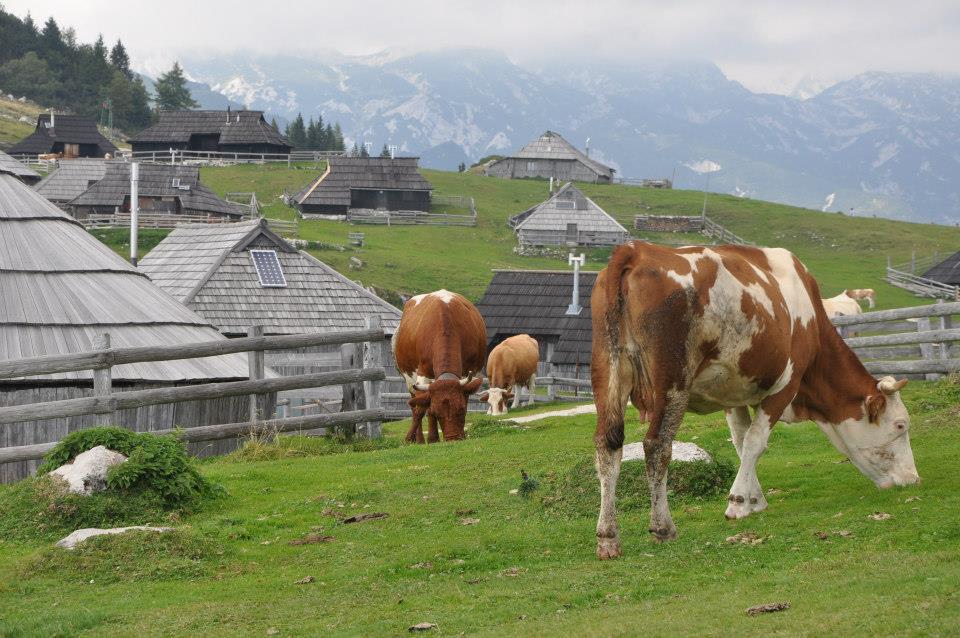Some visitors have likened it to a Hobbit village. And there is indeed something fairytale-like about Velika Planina, a highland pasture in northern Slovenia – an area whose uniqueness was almost lost in the mid-20th century.
Located in the heart of the Kamnik-Savinja Alps, and accessible by cable car, Velika Planina is one of Europe’s largest Alpine pastures. It’s also one of the most unusual, as it’s dotted with semicircular wooden cottages that cannot be found anywhere else in Europe. Designed to provide shelter for both livestock and humans, the unique cottages date back to the Middle Ages. (The oldest existing remains of a cottage date back to the 16th century.) The cottages have become a symbol of Velika Planina and are among the most interesting examples of vernacular architecture in the country.
However, Velika Planina is anything but a museum; it’s a vibrant working pasture. Local herdsmen drive cattle up from the valleys to Velika Planina each June and remain there, with their livestock, for the rest of the summer season. In addition to taking care of their own animals, they are all required to participate in group work – removing weeds, maintaining ditches, and so on. They even have a building they call “the Parliament,” in which they discuss their daily work and play music. A wooden church overlooks the cottages. (In fact, the herdsmen make an off-season trip to the church each Christmas Eve, for one of the most idyllic Midnight Masses in Slovenia.)
The herdsmen also produce dairy products, including butter and cheese, which they often sell to visitors. One type of cheese, known as “trnič” and shaped like a pair of female breasts, is typical of Velika Planina. It was once given by herdsmen to girls they were wooing. The herdsmen’s woodworking skills have also become well-known, as they produced various wooden objects – such as spoons and knives – for their own needs while on the mountain.
The idyllic landscape of Velika Planina was almost lost forever in the 20th century. Most of the traditional cottages were burned down by the Germans during World War II. After the war, Communist authorities wanted to replace the cottages with a single state-owned cooperative building, where the herdsmen would produce their dairy products. It took the passion and courage of architect of Vlasto Kopač to ensure that the uniqueness of Velika Planina was preserved. He not only made sure that the herdsmen’s buildings were restored in the traditional style, but also that the unique design was used for vacation homes that later sprouted up in Velika Planina, ensuring that the area remains one of the most attractive highland pastures in the Alps.


































































